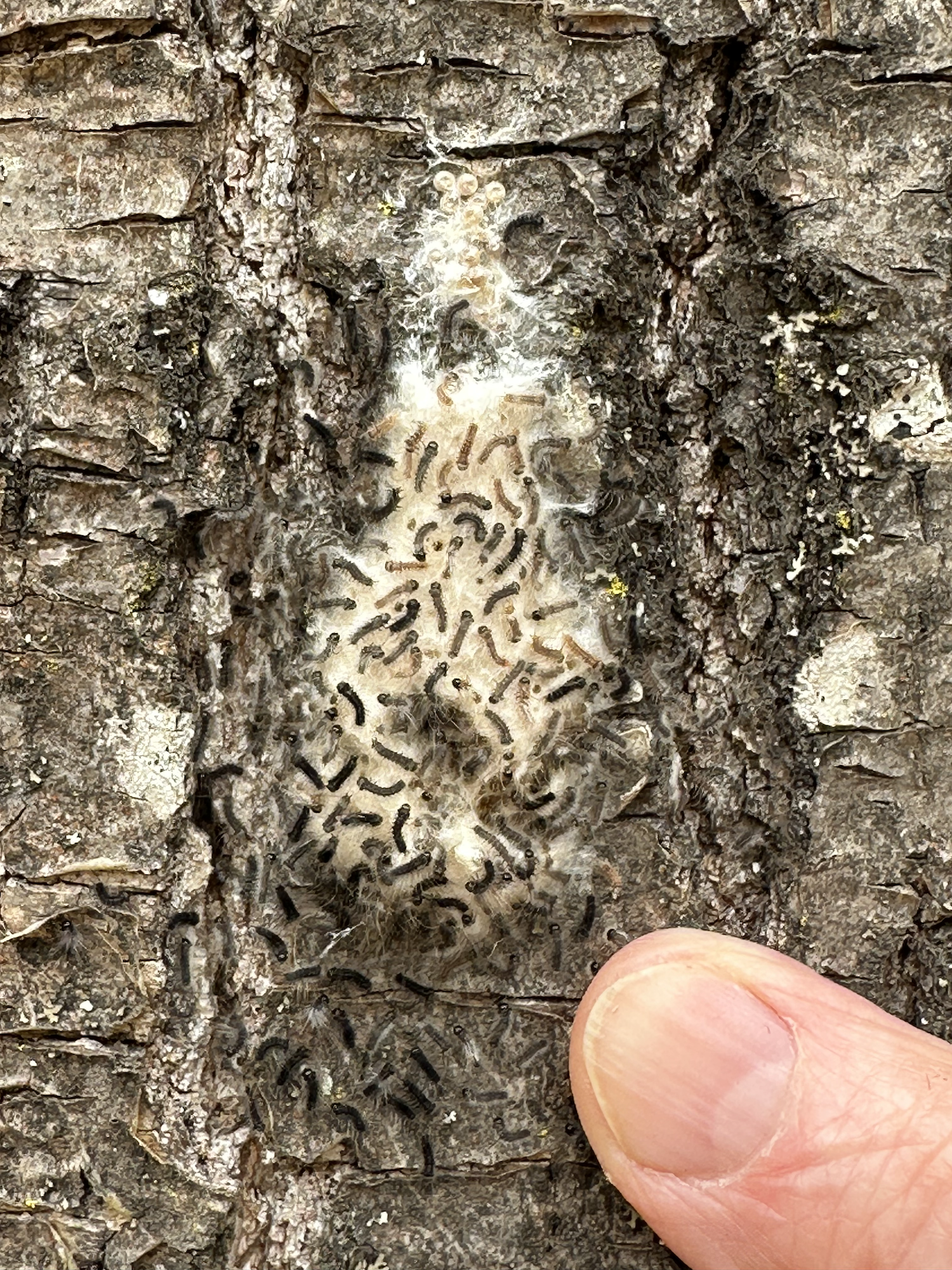Will Spongy Moth Be on Madeline Island Again This Summer?
/Forest health experts are predicting another outbreak year of spongy moth in the region, and drought continues to be a serious concern for tree health. If we experience a wet spring, in addition to directly helping the trees, the moisture will support growth of the fungus that feeds on and kills spongy moth caterpillars. Keep your fingers crossed!
As spring and summer progress, we will likely notice trees that do not leaf out because they have died. Some of this mortality may be the result of defoliation by spongy moth caterpillars over the past couple of years, in combination with drought and other stresses. Trees that start the 2024 season already weakened may only partially leaf out this year and be more susceptible to any kind of stress.
Spongy moth outbreaks are cyclical. The hope is that the population of spongy moths will decline within the next couple of years.
What can I do to protect my trees?
Property owners who want to act against spongy moth defoliation can do as was recommended last year (see below). Like our 2023 summer, the heaviest infestations in 2024 will be in areas of oak and aspen.
The most important thing you can do — where it is feasible, water your trees!
Other things that can be done to protect high value trees in a yard or small woodlot:
Before the eggs hatch, usually mid- to late May, destroy egg masses that are within reach by scraping them into a container then soaking in sudsy water for two days before discarding -
Or spray the egg masses with a horticultural oil. Golden Pest Spray Oil is a good one because it's mainly soybean oil. Do not use motor oil or other lubricants, as these pollutants can harm the trees and soil.
Before the eggs hatch, apply bands of sticky material around selected trees to trap young caterpillars as they crawl up the tree.
As they grow bigger, trap caterpillars by tying a folded piece of dark cloth around the tree, at breast height. Caterpillars crawl down from the tree during the day and will be caught under or in the fold of the cloth on their way back up to feed late in the day. To be most effective, caterpillars should be removed daily and destroyed.
Individual trees can be treated with chemicals, which protect for one year. Treatment does not kill all the spongy moth caterpillars, and the chemicals are not environmentally friendly.
I know some of us lost our “spongy moth management motivation” last year because the efforts didn’t seem to make much difference. An option is to do only what you must to be able to enjoy your time outside e.g. wiping down the chairs and picnic table on the deck.
It’s important to keep in mind that spongy moth is just one factor that affects tree and forest health. Weather, other insects, diseases, site factors, age, genetics, management, all impact tree, and forest health.
For more background information on spongy moth on Madeline Island,
refer to the Madeline Island Wilderness Preserve website: https://www.miwp.org/latest-news/category/Spongy+Moth
Other on-line resources for spongy moth in Wisconsin and its management:
Wisconsin Department of Natural Resources website: https://dnr.wisconsin.gov/topic/foresthealth/spongymoth
University of Wisconsin-Madison Extension website: https://fyi.extension.wisc.edu/spongymothinwisconsin/
Wisconsin Department of Trade and Consumer Protection website: https://datcp.wi.gov/Pages/SpongyMoth.aspx
My Wisconsin Woods website: https://mywisconsinwoods.org/
Please call, text or email me with any questions!
Kathy Kromroy
Cell phone: 651 271 5825
Email: kathrynkromroy@gmail.com




















